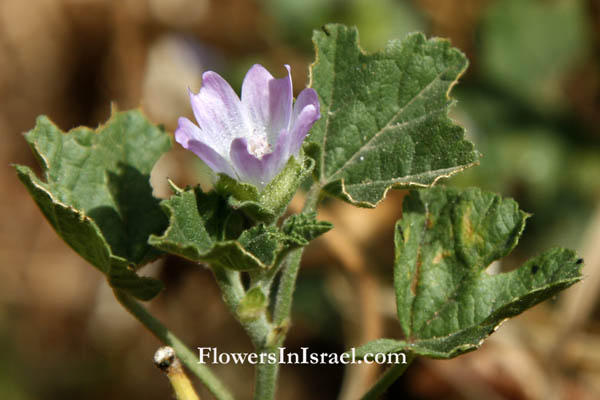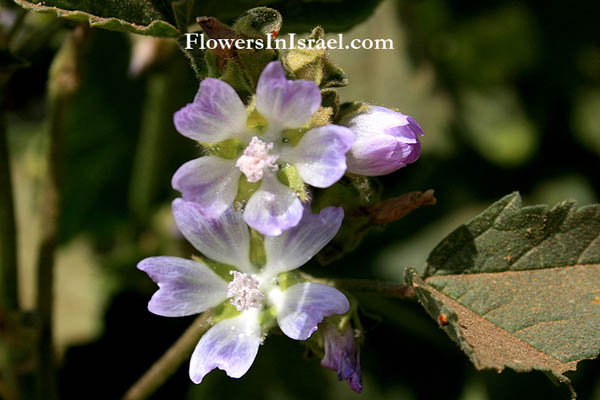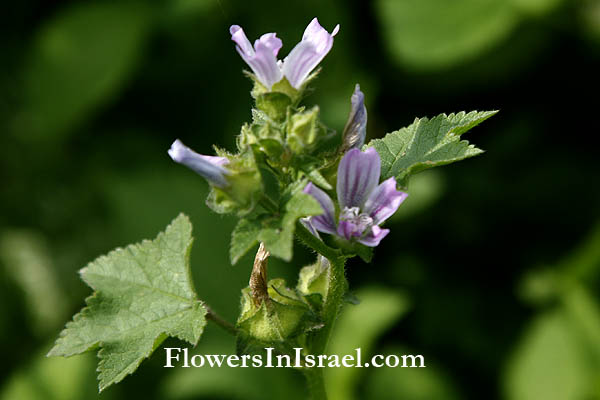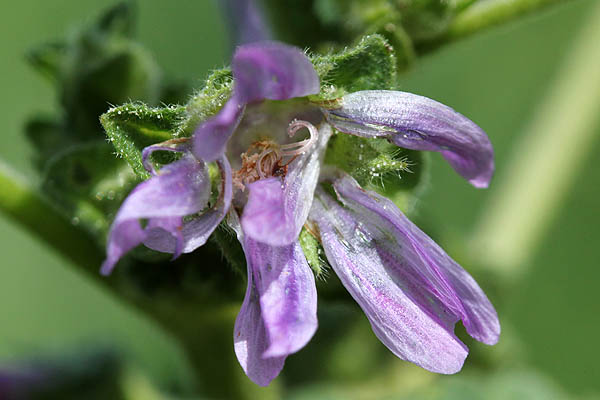Hebrew: חלמית מצויה, Arabic: خبازة نيسية
| Scientific name: | Malva nicaeensis All. | |
| Common name: | French Mallow, Southern Mallow, Bull Mallow | |
| Hebrew name: | חלמית מצויה | |
| Arabic name: | خبازة نيسية | |
| Family: | Malvaceae, חלמיתיים |

|
| Life form: | Therophyte, annual | |
| Stems: | Up to 60 cm; taprooted, several−many-stemmed at base, decumbent and ascending to erect; villous-hirsute; ridged, to 12 mm diameter, with low and broad ridges descending from each leaf, tough, green | |
| Leaves: | Alternate, palmately 5 or 7 lobed, long-petiolate, stipules 2; entire, dentate or serrate | |
| Inflorescence: | Compacted cyme, axillary, 2–6 flowered; pedicels generally reflexed in fruit; bractlets 4–5 mm, lanceolate to ovate | |
| Flowers: | Calyx 5-lobed, 4–5 mm in flower, enlarging somewhat and arching over fruit, veiny, lobes generally glabrous inside; 5 petals 10–12 mm, pink to blue-violet without darker veins, remaining blue when dry, claws generally hairy; 18-20 stamens, monadelphous, pubescent; ovary superior | |
| Fruits / pods: | Schizocarp, segments 7–9, wrinkled, net-veined, glabrous to hairy, margins sharp, not winged, dark orangey brown; seed commashaped, cinnamon brown | |
| Flowering Period: | February, March, April, May, June | |
| Habitat: | Nutrient-rich soils, ruderal | |
| Distribution: | Mediterranean Woodlands and Shrublands, Semi-steppe shrublands, Shrub-steppes, Deserts and extreme deserts | |
| Chorotype: | Med - Irano-Turanian | |
| Summer shedding: | Ephemeral |

Derivation of the botanical name: Malva, from the Greek word "malache", meaning "mallow" and "malakos", "soft, gentle,", referring to the abundant mucilage in certain species, which softens the skin. nicaeensis, nicaeens, Nicene, an inhabitant "of Nice (formerly Nicaea Maritima) France; Iznik (formerly Nicaea), Turkey". The Hebrew name: חלמית, halamit (Post Biblical Hebrew), Aramaic: חלמתא, halamta; Arabic: haluma.
See the list of Medicinal herbs in Israel, the parts used and their medical uses to treat various diseases. Bible resources:


Location: Achu Binyamina |